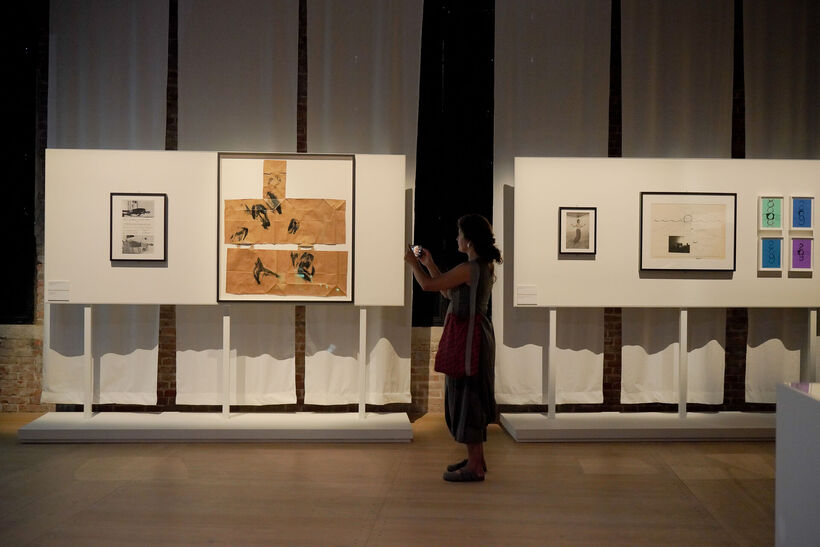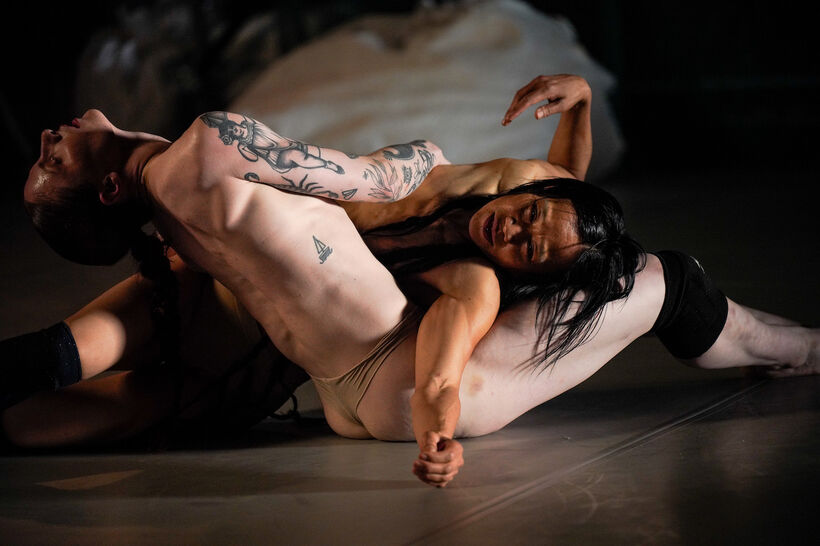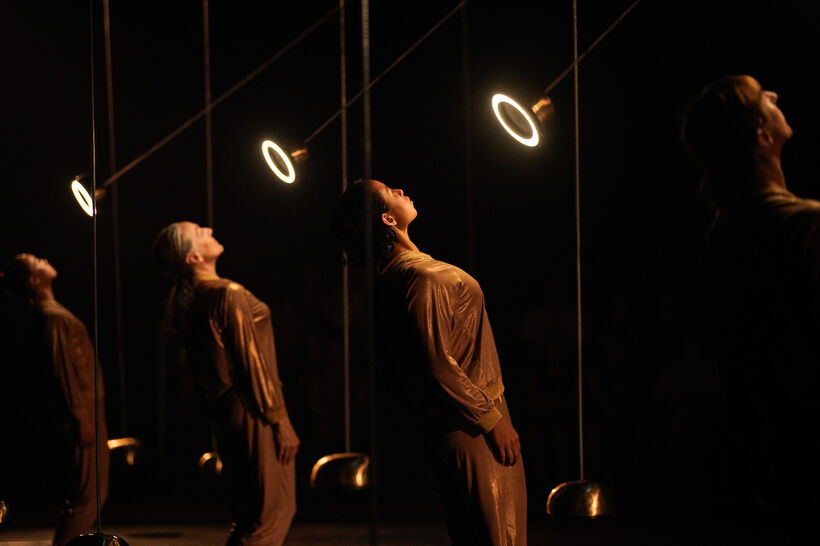Biennale Danza – Altered States in Venice #1
Located in the stunning buildings of the Arsenale di Venezia, the Teatro Malibran, and Ca' Giustinian (Venice), and Teatro del Parco (Mestre), the Biennale Danza’s three-week programme represents a festival with an international character, where younger choreographers are called upon to confront themselves with more experienced ones. With seven world premières, three European premières and nine Italian premières, the festival continues the artistic tradition of previous editions: to bring a mix of international companies to Venice, at the crossroads of poetics and aesthetics. The theme chosen by artistic director Wayne McGregor – Altered States – is as simple as it is effective: an invitation to reflect on the chemical processes that dance activates in both the performers and audience.
As a Venetian, or rather a native of Mestre, who has been based in Berlin for some time, it was strange, beautiful, and intense to attend the Biennale Danza after a few years' absence. One aspect that I personally found valuable at the festival is the attention given to dance as a technology of the body, something which is not taken for granted. By rendering dance as a language that is not only emotional, personal, activist, but also and, above all, technical, specific and, elaborated, requiring a knowledge of vision and is consequently capable of being poetic and visionary, Biennale Danza brings a high level of movement and choreographic design back to Venice. By presenting skillfully performed dance techniques, this festival runs counter to certain curatorial trends where the practice in contemporary dance sometimes functions more as social rhetoric than artistic investigation.
A small aside: I do not deny the power of practices and the careful research work of many artists in the field; what bothers me is the overuse of the word ‘practices’ without any real consistency.
Furthermore, in line with the previous edition, Biennale Danza interweaves the experiences of the Biennale College Danza, a rich programme of free workshops, post-performance discussions, and screendance, all accompanied by a very smart catalogue full of texts, interviews, and thought-provoking images.
Caressing the Golden Lion
Italian-American Simone Forti was awarded the Lifetime Achievement Golden Lion during the opening of the eponymous anthological exhibition in the Sala D'Armi (A and E), which was dedicated to her work and supported by the Los Angeles Museum of Contemporary Art MOCA in San Francisco.
Born in Florence in 1935, she emigrated to America as a child as a result of racial laws, becoming a key player in American post-modernism, interweaving movement with speech, drawing, and video through her extensive research. Forti's ties with Italy have certainly been intense, starting with her study of animal movement at the Rome Zoo and her participation, among others, in performances at the L’Attico Gallery in the late 60s. Back in 2010, the nine Dance Constructions were restaged by Forti herself at Ca' Zenobio (Venice), curated by the Ars di Natura association with the patronage of the two major Venetian universities. More recently, Centro Pecci (Prato) dedicated the exhibition entitled Simone Forti. Senza Fretta (2021) in large part to the series News Animation.
As festival director McGregor underlined during the ceremony, Forti was awarded the Golden Lion for her seminal performative research and transmission, considering performance itself as an object through her hybrid, multi-instrumental, and multimedia work. In the video (Zuma News 2013) which was playing as the reasons for her award were read out, we saw Forti lying on the Malibu shoreline, dressed in everyday clothes, intent on stacking a collection of newspapers, which are soaked and rendered fragile by the sea. The image of a 78 year old Forti determined to build vulnerable new worlds of paper, salt water, and sand fits perfectly with McGregor's words which are warm but without unnecessary frills, careful to highlight the artist's work and legacy. Forti first addressed the ceremony with a recorded video message and later, despite being ill with Parkinson's disease, found the strength to give a touching live-streamed greeting from Los Angeles. As we saw her caressing the Golden Lion statuette, she reminded us, in a light but meaningful way, that the period (the 1960s) to which she belongs artistically, was a time when artists themselves were against awards.
The anthological exhibition, curated by Rebecca Lowery, Alex Sloane and Jason Underhill, pinpoints some of the topical moments in Forti's work, from Animal Studies, various rare photos, videos, and documents of Dance Constructions performances at different historical moments, to the more recent Holograms or Bag Drawings, made during the recent pandemic, as well as in displays of some of Forti's texts, such as Oh, Tongue (2003). Despite the careful curation of the chosen materials, there is a lack of a decisive curatorial stance or insufficient commentary for the visitor. I asked myself, if I had been unfamiliar with Forti's work, what would I have understood of its essence? What of her immense legacy and her living archive would I have taken home?
The opening was accompanied by three famous Dance Constructions (1960, Yoko Ono New York house), re-assembled by long-term collaborator Sarah Swenson and performed by the young dancers of the Biennale College Danza: Hangers, consisting of hanging from a rope, leaning on one foot, Slant Board climbing an inclined platform with the help of some ropes, and Huddle where the performers create a single mass with their folded, piled up bodies, coming out of the pile one at a time to climb over/through it.
The Dance Constructions appear to be simple everyday movements, but require careful and soft preparation of the bodies in release. Perhaps understandable victims of the strong emotion, the performers in Hangers, in my opinion, came across as a bit stiff, while Slant Board had an extremely animated dynamic (perhaps due to the tension of the performance?). Only in Huddle did I finally see loose and relaxed bodies, listening to each other intently. On the other hand, reassembling and reliving performances from 63 years ago, born in a specific context and imagery and with bodies prepared in a certain way, is a decidedly complex task. In any case,I found the work of the young dancers commendable and valued the opportunity to see some of the Dance Constructions again in Venice.'
All in all, a sensitive and attentive opening and award ceremony, free of too much unnecessary pomp and circumstance, which fully captured the spirit of Forti's work.
In Between Post-Colonial Discourses, Choreographic Installation and Dance as a Celebration of Life
The opening of the Biennale Danza continued with the debut of the intense Bogotà by Andrea Peña, a Colombian choreographer living in Canada, winner of the Biennale Danza 2023 call for a new international choreographic creation. By framing the concepts of death and rebirth/resurrection within the imagery of the grafting of European Baroque sensibilities onto indigenous culture, Bogotà developed a strongly post-colonial informed investigation. The choreographic signature is influenced by re-setting and mixing gestures from ancient Andean mythology and magical realism into contemporary movement language.
The piece is set in a post-industrial context: on stage, we see scaffolding, rubble sacks, a black piñata, a sound system with a flavour of abandonment (in fact, it is never actually directly used in the piece). Nine performers offer a very physical movement quality, determined by sequences of partnering and falling, with animalistic, strongly sensorial traits.
Peña offers an edgy reflection on the hedonistic condition of life itself, as if death and rebirth could be reconsidered through the pleasure of suffering. This highly energetic, yet dark piece analyses spaces of complexity in society where the need to celebrate death as well as rebirth pass through a strong sense of queer community. The choreography is built on the constant composition and decomposition of the action on stage. On a conceptual level, this works very well, but in terms of dramaturgical timing, it does not always work. It results in unconnected moments in which the audience risks losing the thread of the piece. I really enjoyed the initial idea of starting with the right side door opening onto the Arsenale's water basin through which the light of the sunset streams in. A truly unique vision and one that communicates with the location of the performance.
After winning the Silver Lion in 2021, Ireland's Oona Doherty returns to Venice with Navy Blue. This show was also performed this June in Prague at the Tanec Praha festival (full review here).
Pendulum, created by Australian dance artist Lucy Guerin together with composer and percussionist Matthias Schack-Arnott, consists of an installation of 39 pendulums and the choreographically designed interaction of seven dancers, dressed in full, tight-fitting gold jumpsuits. Each pendulum is made up of its own speaker, a robotic clapper, light, and sensors which send data to a centrally controlled computer.
At first, the pendulums only light up, then the dancers explore their movement, manipulating them individually, gradually creating increasingly more adventurous movement patterns, such as rolling under the pendulums while they swing or almost instinctive adjustments when coordinating and pulling them. A choreography of bodies, objects, and sounds that certainly goes back to basics in constructing pure movement patterns, one which the aesthetic research is derived from both the evocative power of the pendulums and how they inform the dance and interact with the dancer. The hypnotic experience of this performance remains imprinted in the mind.
Ajiaco, the name of a traditional Cuban dish based on a mix of ingredients, was the chosen title for the collection of four dance pieces created for Cuban company Acosta Danza.
Four choreographers assembled for an extraordinary ensemble of dancers: Micaela Taylor with Performance, Sidi Larbi Cherkaoui with Faune, Javier De Frutos with 98 Días, and Alexis Fernández with De Punto a Cabo.
Performance is a group piece that seeks to express the complexity of dance, where, in a minimal set, a choreographic language emerges through facial expressions and an intricate mix of solos, and duets, combining classical ballet and hip hop. Thanks to the change of musical set, from electronic to classical, there is a tone of disintegration.
In Faune, we see Vaslav Nijinsky's traditional masterpiece, L'Après Midi d'un Faun, rewritten by Cherkaoui through his extreme corporeal language, where visceral dance athleticism also appears contaminated by Capoeira elements. The music is also reinterpreted and the hypnotic notes of Claude Debussy are joined by the oriental sounds of modern composer Nitin Sawhney.
In 98 Días, dedicated to the Spanish poet Federico García Lorca, the company moves with the poet's words in a manner that is both narrative and abstract at the same time. Dressed in blue, and reconstructing Spanish and Cuban postures, the dancers captivate the audience with the intensity of their gestures and the eloquence of their bodies.
The last piece by Alexis Fernández, De Punto a Cabo, showcases life in Cuba. In a background video showing the famous Malecón promenade, the choreographer offers a glimpse of Cuban life, amidst the contradictions and celebrations. The street-clad dancers perform a mix of dances, from hip hop and pointe, to percussion, before completely stripping off, leaving on just their underwear, as if to remind us that the essence of a city/nation is always the people within. The naivety with which the work dealt with its chosen themes made it rather flat compared to the others. Nevertheless, it was splendidly performed.
This evening, staged Acosta Danza, saw a collection of different pieces capable of exalting the extreme technical skills of the dancers and again reminding us that dance is capable of celebrating life and vitality.
Written from Altered States Biennale Danza International Festival of Contemporary Dance from the 13th to 29th July 2023, in Venice, Italy.







